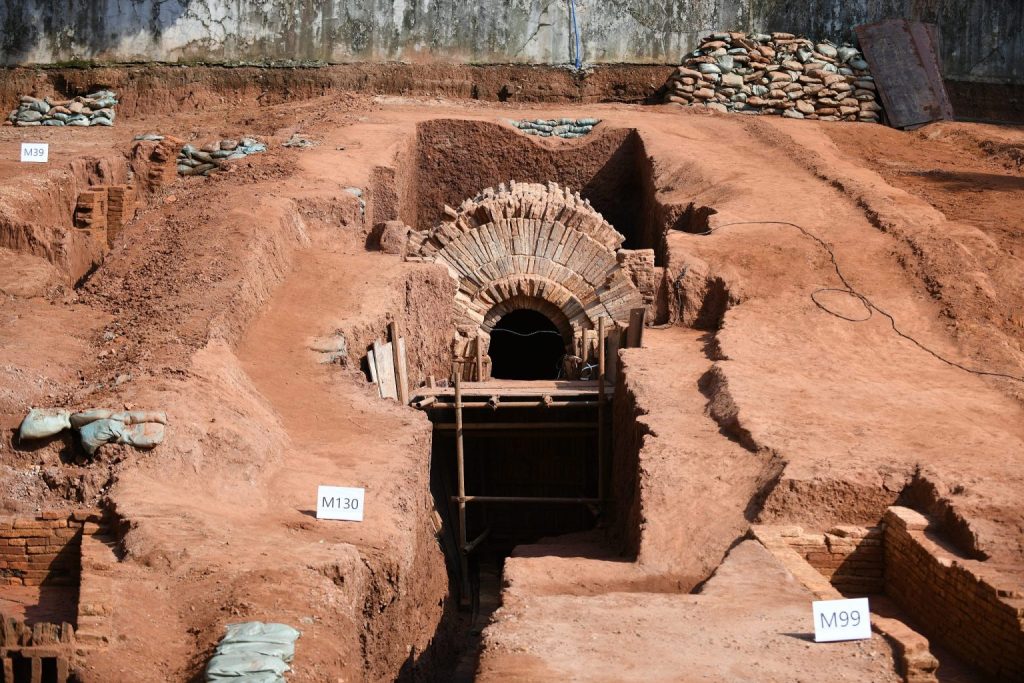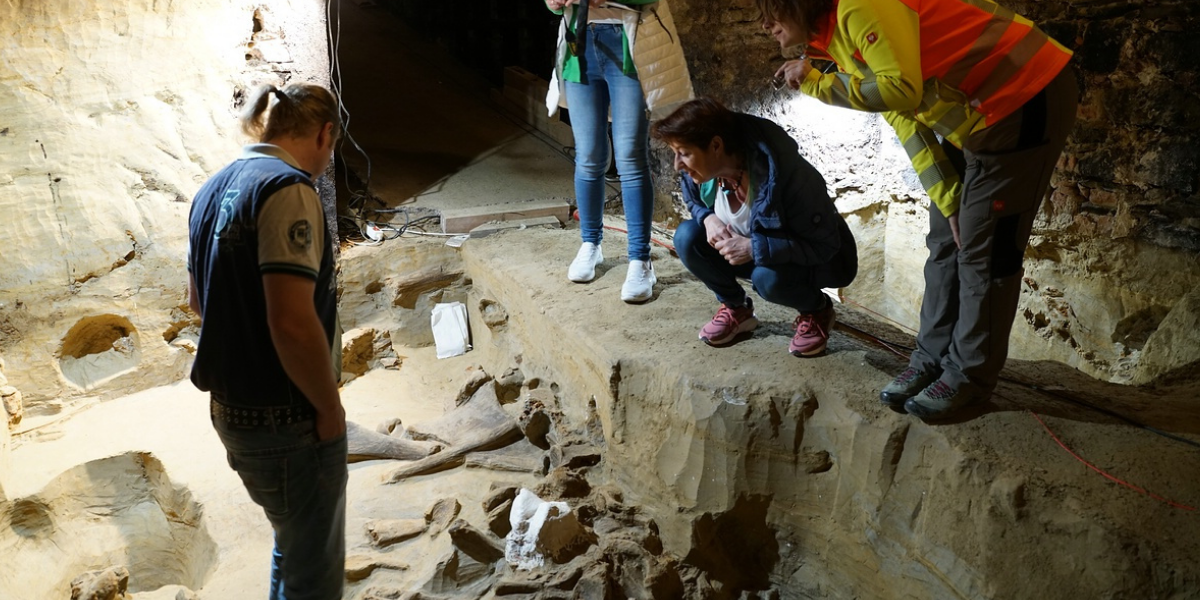Construction equipment that started to work on the construction of the zoo unearthed 2100-year-old tombs.
Xinhua News Agency announced the discovery of an ancient burial site with 148 tombs in the Guangzhou area in South China’s Guangdong Province.
Xinhua reported that the tombs date back from the Han Dynasty (206 BC-AD 220) to the early years following the founding of the People’s Republic of China.
The Guangzhou Municipal Institute of Cultural Heritage and Archaeology led the excavation of about 1,300 square meters at this site.
The site contains four Han Dynasty tombs, including 15 from the Jin and Southern dynasties (265-589), 15 from the Tang Dynasty (618-907) and 121 from the Ming and Qing dynasties (1368-1911). A total of 196 artifacts were unearthed, including pottery, porcelain, bronze ware, jade and bead decorations, along with 48 tombstones dating from the Republic of China (1912-49) to the early years of the PRC.
Among the most important discoveries are a nearly intact Eastern Jin Dynasty (317-420) tomb and a well-preserved Southern Dynasties (420-589) tomb.
The most remarkable of the tombs is a large and structurally complex, well-preserved Eastern Jin tomb. The 10-meter-long burial chamber shows no significant damage except for a robbery hole above the seal door. It is the largest and best preserved Eastern Jin tomb discovered in the Guangzhou area.

A common burial place for a married couple was also unearthed. Small holes indicate that the tomb has been looted, but otherwise the structure is almost intact.
Cheng Hao, an official at the institute, said the tombs discovered this time are very densely scattered and cover a period of more than 2,100 years.
“The discovery of these two tombs is of great significance for the study of tomb shapes, phases and funerary customs during the Six Dynasties (222-589) in Guangzhou, as well as for research on construction technology during the architecture of the Jin and Southern dynasties,” Cheng said.
There is a pattern in the way the tombs are arranged, especially in the Ming and Qing burial chambers. Not only are they similarly oriented and scaled, but there is a uniform space between them. This implies that the area was a planned and well-organized cemetery.
These discoveries are crucial for understanding burial practices, architectural techniques and historical traditions in Guangzhou during these periods.
Cover Photo: China News Service




